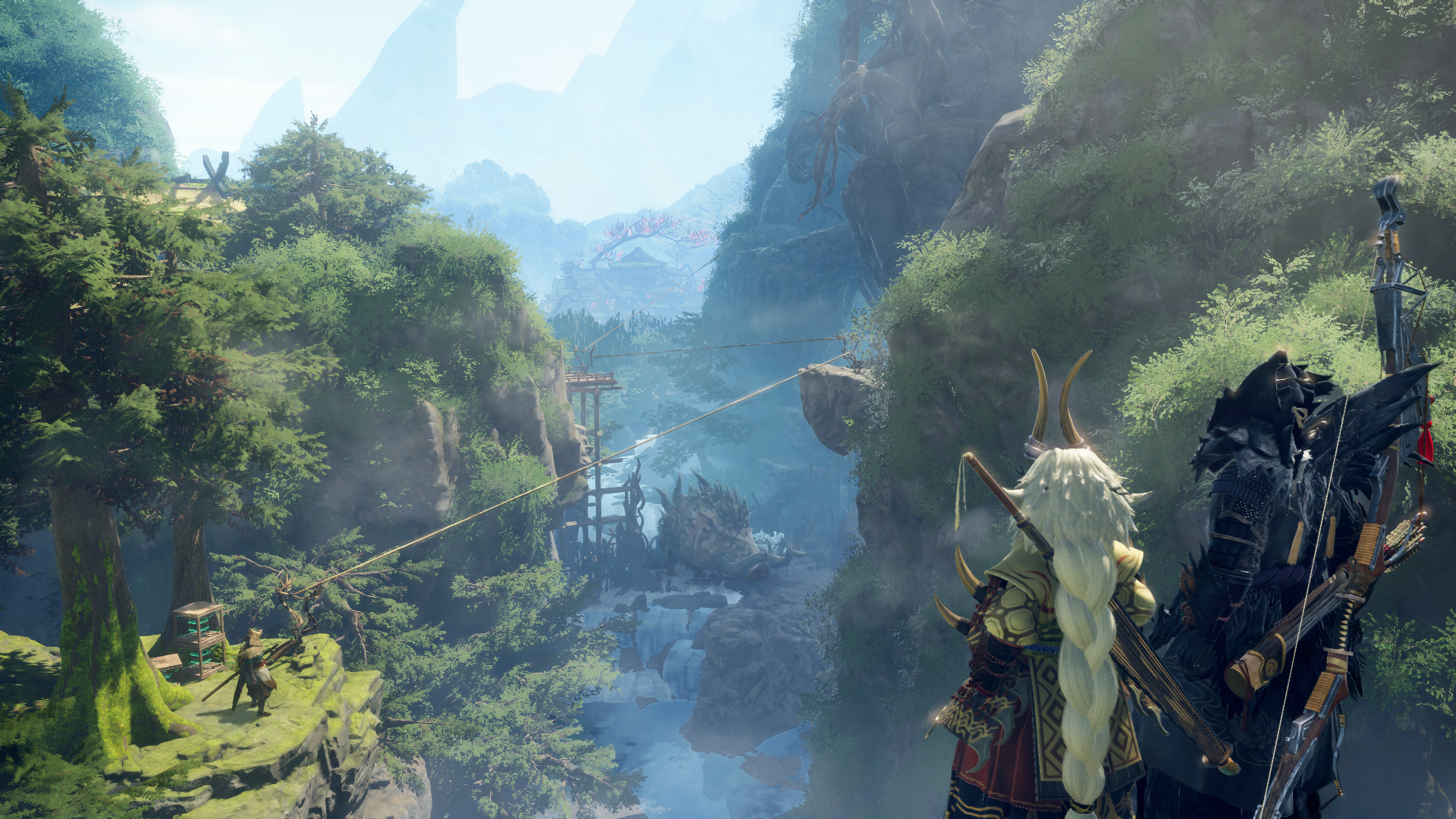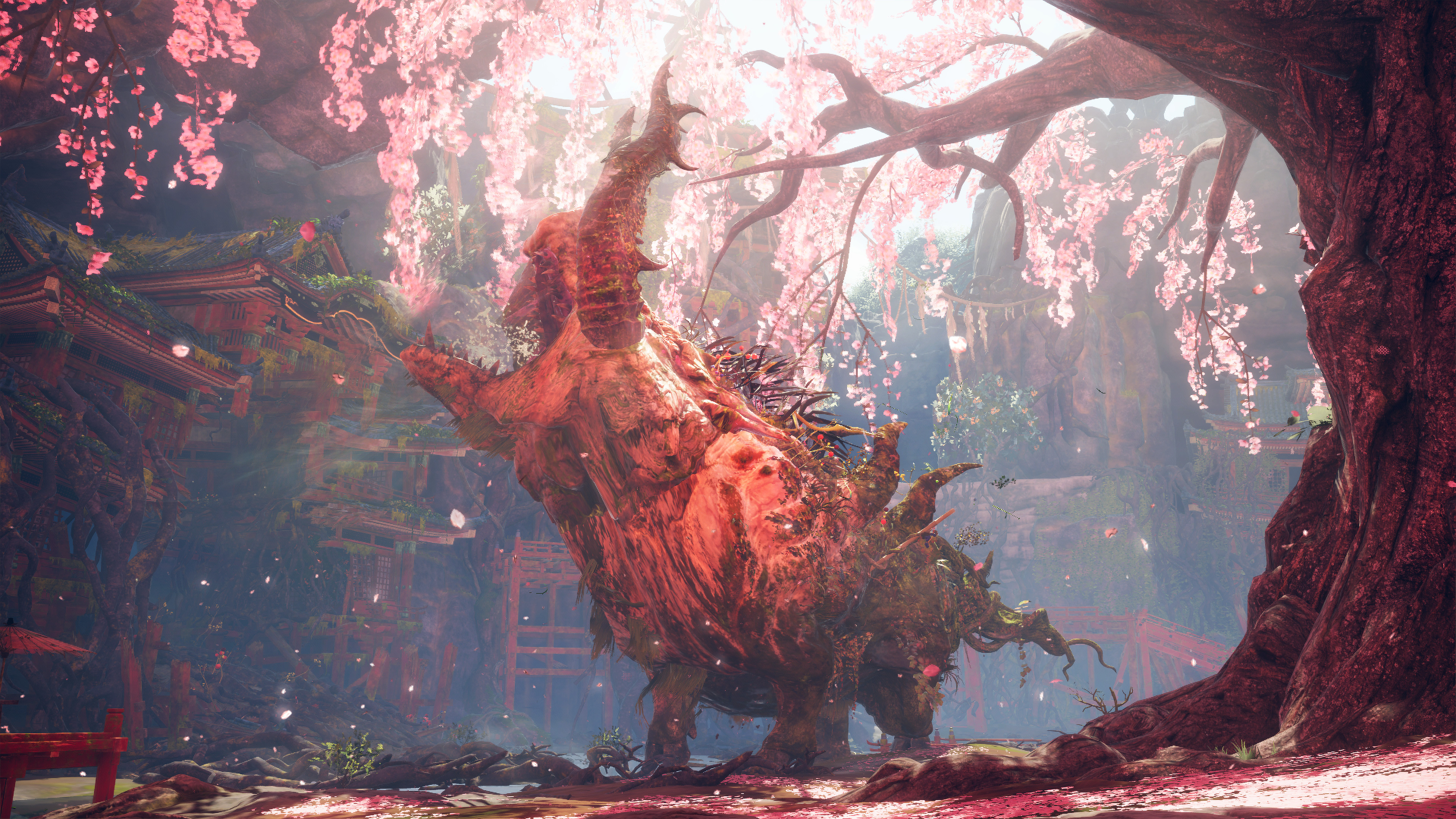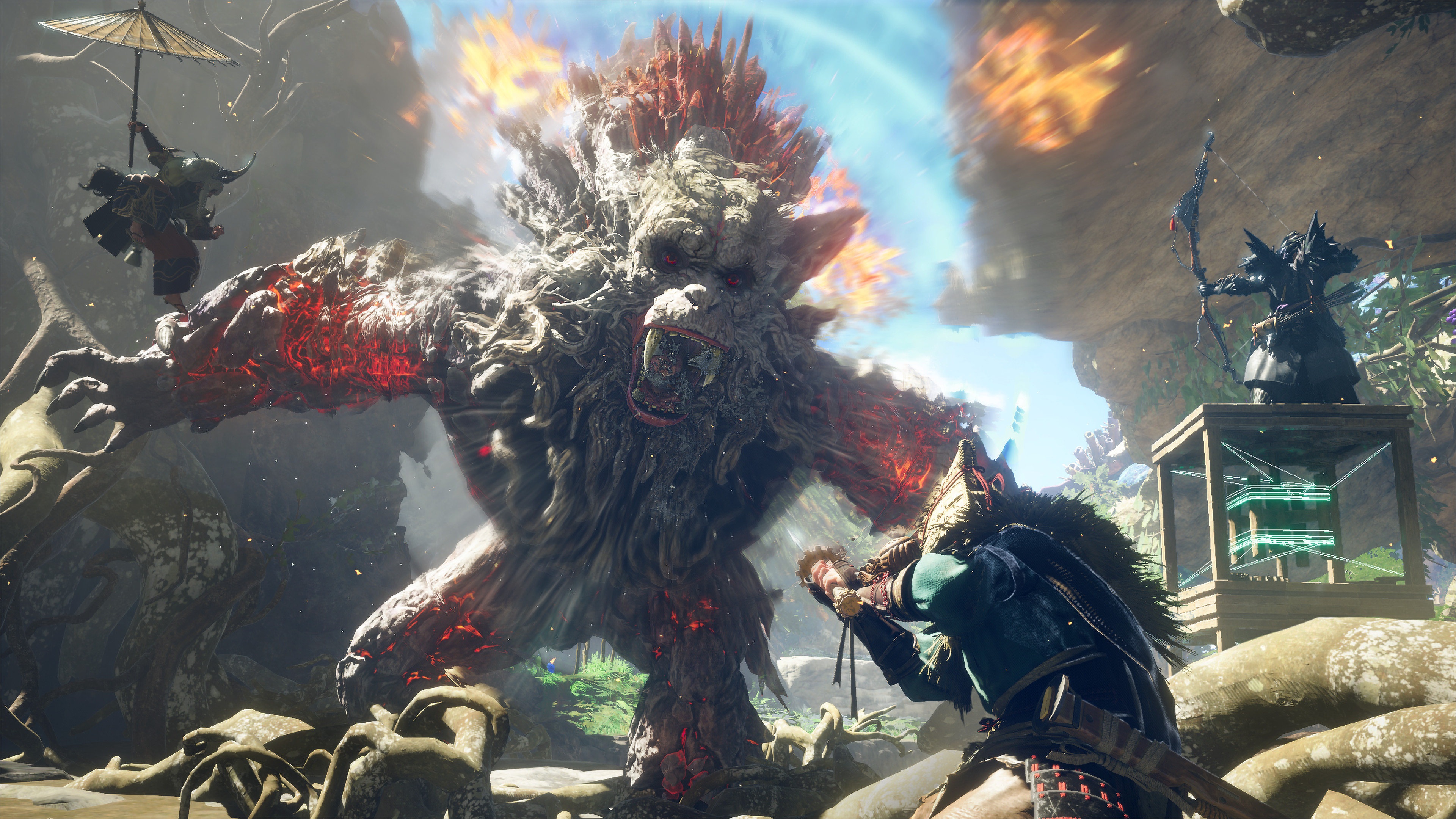Koei Tecmo's new game is like Monster Hunter on fast-forward
The developers behind the Toukiden series are back for another tilt at the hunting genre with Wild Hearts.

The latest EA Originals title, it must be said, is stretching the latter term, and not even for the most obvious reason. Wild Hearts, in development from Koei Tecmo's Omega Force (best-known for the Dynasty Warriors series), is fairly obviously a direct competitor to, and highly inspired by, Capcom's Monster Hunter series. But it's also Omega Force's second bite at this particular cherry, following the demon-slaying Toukiden series.
Which is all to say that a lot of Wild Hearts will look familiar even if, in the hands, it has more than a few interesting tricks up its sleeve. The game was first shown at an EA Originals preview showcase introduced by Yosuke Hayashi, interesting because he's the head of Team Ninja rather than Omega Force, who studiously avoided drawing any comparison to Toukiden while saying Wild Hearts is the result of four years of development (Toukiden 2 came out in 2016). The game represents, in Hayashi's words, the development team returning to "unfinished business in the hunting game genre".
So the basic pitch is hunting, crafting, and various types of gadgets called 'karakuri'. The latter is what sets Wild Hearts apart from the competition, as these devices are constructed in realtime at your command, there are a tonne, and they can be combined. Many focus on manoeuvrability, with a simple example being a big ol' tower with a ladder which you can build next to a monster, sprint up, and jump off to attack. You slap them down, they quickly build in a Fortnite-aping animation, and off you go.
You craft karakuri through gathering (plentiful) materials. Other types include springboards that yeet your character into the air while providing a glider for some falling with style, zip lines, and human catapults. They're not all movement-focused, though a lot are purely because the game is composed of four huge open world areas (plus a hub town, naturally), which are intended to be places where players spend a lot of time wandering (rather than simply visiting for individual missions). Oh that's another karakuri you can build: a camp.
As well as combining with each other, karakuri have bespoke interactions with each of the game's eight weapon types. Some of these are exactly what you'd expect: a big katana, a whacking great hammer, a bow… we've been here before, and in similar fashion. Others are more curious: there's a bladed umbrella that looks like something out of Bloodborne, and the whole schtick of the karakuri staff (which sadly I didn't try out) is that it can transform into five weapon types.
You'll need that kind of flexibility because an instantly striking aspect of Wild Hearts is that these beasts (their lore name is 'Kemono') are absolutely gigantic. One of the earlygame monsters you'll fight is a big boar and it's just so massive you're almost taken aback: Monster Hunter does scale well enough, but you start small, whereas right out the gate here you're fighting something bigger than a fire engine.
The game's mechanics lean into this, and particularly neat to see is the ability to clamber on the Kemono to reach those especially stab-worthy areas. While a lot of this game is going to sound like Monster Hunter, it doesn't really feel like Monster Hunter in action.
The biggest gaming news, reviews and hardware deals
Keep up to date with the most important stories and the best deals, as picked by the PC Gamer team.
This is a more arcadey hunt, to use a depressingly archaic term, where the combat feels a little faster and looser than the anchored precision hunters may be used to. Sometimes it does feel a little off, and in this early build the camera does lose track of the action at times, but this is a game of high-octane spectacle. There are also these moments where it goes all-out in amusingly unexpected ways: such as everything stopping to end each hunt with an OTT 'finisher' blow.
Yes, you carve the monsters when they're dead and, yes, you make things out of them. A bunch of kemono have been shown including a plant-infused squirrel, the giant 'Kingtusk' boar, a nasty looking wolf, and a fire monkey who looks very angry that he's on fire. As is standard in the genre, they'll have variants with early ones returning in later, deadlier forms. Epic 'boss-style' hunts are also promised alongside the standard hunts.
Wild Hearts can be played singleplayer or co-op: though with multiplayer, it goes for a maximum party size of three. During development the team apparently started with the default of four but, over time spent playing, realised that parties of three players were the sweet spot and simply, in an EA rep's words, "more fun".
This side also ties in with the different open world atmosphere the development team is going for and, although they're wildly different games, what this ended up reminding me of was Phantasy Star Online 2. The whole fun of that game was dropping in for a couple of hours with mates, choosing a zone to play in, then rushing around the place blasting away and hoovering up the loot.
That's the vibe here, supported by drop-in crossplay and dynamically scaling difficulty that allows players to join in at any time (loot is rolled randomly for each player at the end of fights, so there are no worries about everyone getting their rewards). One more nice touch in this respect is that there are karakuri that seem purpose-built for chilling: you can stick down a bench to sit on with your mates, and why not build a lantern next to it.
Another surprising game that came up in this preview session was Death Stranding, of all things. I'm not fully sold on this but the comparison was made in relation to the 'dragon' karakuri, which are permanent structures that quickly accumulate in number as you move around the open environments: but they stay persistent in the host's world. I guess the idea is that building a load of contraptions with other players and then coming across them later is vaguely strand-like but… yeah. It's a cool feature. I'm not sure it's much more than that.
Except… there is one interesting element in this persistence, and that's what some of these karakuri do. One for example is an automated paddle scoop that you stick in the water, which then goes around 'fishing' on your behalf. Another karakuri will automatically cook ingredients. As well as being hunting tools these things seem to automate a lot of the busywork for players, which is an interesting concept, though some players may feel that an activity like fishing should be an occasional break and diversion rather than a grind.



On those open worlds, the idea is they embody the seasons. So spring is all cherry blossoms, with the game's overall visual style being Japanese in theme, while summer is a gorgeous island surrounded by shimmering ocean. Autumn gets a bit grimmer, featuring an enormous war-torn fortress carpeted in the season's brown leaves, and winter is a castle that's been split in two by a giant kemono and frozen.
The hub world, Minato, can be improved by the player over time and has quest-givers, etc. Though in terms of just being in the open world, there are plenty of karakuri designed explicitly so you don't have to go back. So you can trigger hunts in the world, upgrade and craft by building a workbench, access the map to choose new targets, switch between solo and co-op on-the-fly, and so on.
The customisation options sound vast, though obviously this wasn't reflected in the demo: there are apparently over 200 variations of the weapons, plus cosmetic variations of weapons and armour, a sliding scale to make things more animal or more human in appearance, and a transmogrification system for stats. The endgame stuff wasn't really touched on during this session, beyond the guidance it takes "roughly 30 hours" to complete the singleplayer story but then "there's a lot more content after that".
The endgame, and Wild Hearts' post-launch support, will determine whether or not this is a serious competitor to Monster Hunter. The surprising thing is that, when you strip back the many points of comparison, it doesn't play like that game. This is a more action-oriented take on the genre, but these moments of action go hand-in-hand with a focus on exploration and persistence that Capcom's game arguably lacks. It's a stranger twist on the formula than it looks and, even if it doesn't offer an endgame to keep you playing forever, I'd wager those thirty hours are going to be pretty good. Perhaps this is an original, after all, even if not at first glance.

Rich is a games journalist with 15 years' experience, beginning his career on Edge magazine before working for a wide range of outlets, including Ars Technica, Eurogamer, GamesRadar+, Gamespot, the Guardian, IGN, the New Statesman, Polygon, and Vice. He was the editor of Kotaku UK, the UK arm of Kotaku, for three years before joining PC Gamer. He is the author of a Brief History of Video Games, a full history of the medium, which the Midwest Book Review described as "[a] must-read for serious minded game historians and curious video game connoisseurs alike."

